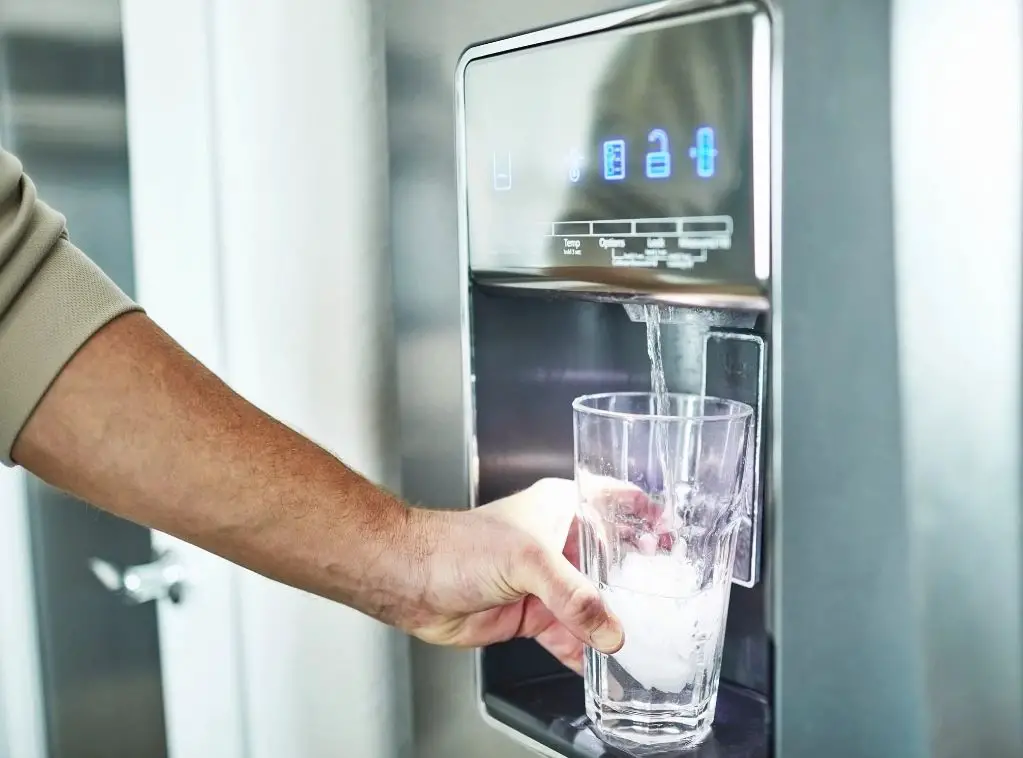Having water that is not as cold as you would like from your refrigerator’s water dispenser can be annoying. There are several possible reasons why this may be happening. In this article, we will go over the most common causes and solutions to help you get nice chilled water from your refrigerator again.
Page Contents
Clogged Water Filter
One of the most common reasons for warm dispenser water is a clogged water filter. Refrigerator water filters should be replaced every 6 months or so. Over time, they can get clogged with sediment, minerals, and other contaminants that restrict water flow. This results in the water bypassing the filter and not getting properly chilled. Try replacing your water filter with a new one to see if that fixes the issue.
How to Replace Refrigerator Water Filter
- Locate the filter housing inside the refrigerator and remove the old filter.
- Take note of the direction of water flow marked on the new filter.
- Insert the new filter into the housing, making sure it clicks fully into place.
- Run a few gallons of water through the dispenser to clear air out of the system and make sure the water is flowing properly.
Low Refrigerant Levels
Refrigerant is the substance within the coils of the refrigerator that actually absorbs heat to help chill the air and refrigerated spaces. If the refrigerant level gets too low, it hinders the ability to properly cool down the water. Causes of low refrigerant include leaks in the coils as well as regular depletion over time. Have an appliance repair technician check the refrigerant levels and top it off if needed.
Signs of Low Refrigerant
- Warm air from the freezer and refrigerator sections
- Longer cooling times
- Higher utility bills
- Loud humming or gurgling noises
Ice Buildup in Water Line
It’s also possible for ice to accumulate in the water supply line running to your refrigerator. This ice buildup insulates the water from getting colder as it passes through the chilled coils. The best way to fix this is to shut off the water supply, disconnect the line from your refrigerator, and allow it to fully thaw. You can also try pouring warm water over the supply line into a bucket to expedite thawing.
Preventing Ice in Water Lines
- Insulate exposed parts of the water line
- Heat tape around supply line in very cold climates
- Routinely drain and refill dispenser to circulated water
- Set refrigerator to slightly warmer temperature if issue persists
Faulty Water Inlet Valve
The water inlet valve controls the flow of water entering into the refrigerator dispenser system. If this valve fails or doesn’t close properly, it can allow warm water to mix into the cold supply. Replacing the water inlet valve is recommended if you suspect it is not functioning as it should.
Symptoms of Bad Inlet Valve
- Dripping or leaking water
- Warm dispenser water
- Water dispensing without pressing lever
- Reduced water flow
Clogged Dispenser Tube
There is small diameter tubing running from the water supply up through the refrigerator door that outlet into the dispenser. If this tubing gets clogged with sediment or bacteria, it can restrict water flow and prevent proper cooling. Try clearing out the dispenser tubing with a pipe cleaner or flushing with a water/vinegar solution.
Unclogging Dispenser Tube
- Shut off water supply and disconnect tubing from refrigerator.
- Clean tubing with pipe cleaner or water/vinegar flush.
- Reconnect tubing and turn water back on.
- Run dispenser until water flows cleanly.
Frozen Water Filter Housing
On some refrigerator models, if the filter housing itself freezes up, it can block water flow through the filter altogether. This results in unfiltered warm water being dispensed. Allowing the filter housing to thaw out and keeping it free of frost buildup by regularly changing the filter can prevent this issue.
Thawing Frozen Filter Housing
- Remove filter if possible.
- Direct fan to blow air into housing.
- Pour warm water over housing into container.
- Insulate housing area to prevent re-freezing.
Water Dispenser Not Used Frequently
If your refrigerator’s water dispenser is not used frequently, warmer water can sit in the supply lines and gradually rise to room temperature. Running water through the dispenser for a minute or two pushes out the warmer water and ensures freshly chilled water is ready. Make it a habit to purge the dispenser if it hasn’t been used for several hours or more.
Regular Dispenser Use Recommended
- Dispense water for drinking/cooking daily
- Fill water bottles and pots for pets/plants weekly
- Rinse out bottles, jars, produce, etc. as needed
Freezer Set Too Warm
Ensure your refrigerator and freezer are set to the proper temperatures. The freezer should be kept between 0 – 5 degrees Fahrenheit and refrigerator between 36 – 40 degrees Fahrenheit. If the freezer temperature is too high, it will not chill the water sufficiently as it flows through the coils.
Proper Refrigerator Temperatures
| Section | Temperature Range |
|---|---|
| Freezer | 0° – 5° F |
| Refrigerator | 36° – 40° F |
Conclusion
Having lukewarm water from the refrigerator dispenser can certainly be frustrating and inconvenient. In many cases, though, the issue can be easily remedied by troubleshooting some common problem areas. Be sure to replace old water filters, check refrigerant levels, clear any obstructions in the supply lines, and maintain proper temperature settings. With simple maintenance and monitoring, you can enjoy chilled water on demand from your refrigerator’s dispenser.
